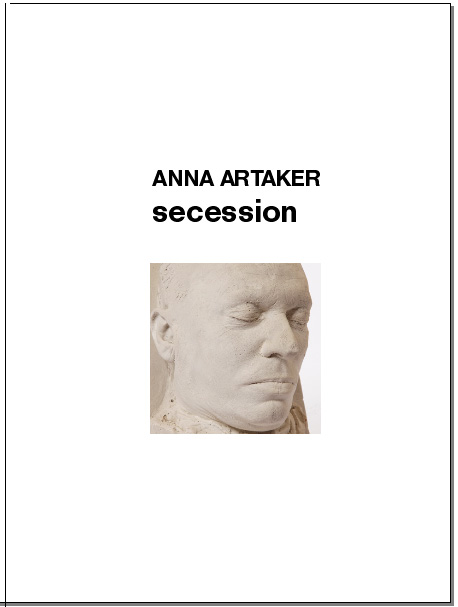Anna Artaker
Anna Artaker’s works examine visual production in the context of how history is written: she analyzes images that have been used in the construction and communication of history and have thus become part of a specific historiography.
Anna Artaker beschäftigt sich in ihrem Werk mit Bildproduktion im Kontext von Geschichtsschreibung; mit Bildern, die zur Konstruktion und Vermittlung von Geschichte herangezogen wurden und so Teil einer bestimmten Historiografie geworden sind - wie zum Beispiel die Totenmasken des armenisch-sowjetischen Bildhauers Sergei Merkurov (1881–1952). Merkurov war „Staatskünstler“ der jungen Sowjetunion und Erschaffer zahlreiche monumentale Heldenbildnisse. Zudem war er verantwortlich für die Produktion von Totenmasken prominenter Persönlichkeiten der Sowjetunion. Diese Gesichtsabdrücke von u.a. Lenin und seiner Frau Nadeschda Krupskaja, Sergei Eisenstein und Maxim Gorki, aber auch Parteifunktionären wie Felix Dserschinski, Leiter der gefürchteten Geheimpolizei, oder Andrei Schdanow, verantwortlich für die repressive Kulturpolitik und Zensur unter Stalin, wurden zu einem Teil der offiziellen Geschichtsschreibung der Sowjetunion.
In der Secession präsentiert sie Stereofotos dieser Masken. Mit der Wahl dieser Aufnahmetechnik thematisiert die Künstlerin die medientheoretischen Implikationen der Masken und ihrer fotografischen Reproduktion. Sowohl Totenmaske oder Gesichtsabdruck als auch Fotografie sind Verfahren zur Übertragung eines Gegenstands oder Körpers in eine andere Ordnung zum Zwecke der Konservierung, Vervielfältigung, Untersuchung etc.
Bezugnehmend auf Walter Benjamins These vom Verlust der Aura von Kunstwerken durch technische Reproduktion kann Anna Artakers Auseinandersetzung daher auch als Untersuchung des Auratischen, das seit Benjamin vor allem eine Frage des Mediums ist, gelesen werden.
Anna Artaker’s works examine visual production in the context of how history is written: she analyzes images that have been used in the construction and communication of history and have thus become part of a specific historiography, - such as the death masks created by the Armenian-Soviet sculptor Sergei Merkurov (1881–1952). Merkurov was a “National Artist” of the young Soviet Union and sculpted numerous monumental statues of the country’s heroes. In addition, he took death masks of prominent figures in Soviet history. These casts—of the faces of Lenin and his wife Nadezhda Krupskaya, of Sergei Eisenstein and Maxim Gorky, but also of party functionaries such as Felix Dzerzhinsky, director of the dreaded secret police, and Andrei Zhdanov, who was responsible for the repressive cultural policy and censorship under Stalin, among many others—became part of the official Soviet historiography.
At the Secession, she presents stereophotographs of the masks. By choosing this recording technology, the artist thematizes the mediatheoretical implications of the masks and their photographic reproduction. Both the death mask or facial imprint and photography are techniques that serve to transpose an object or body into a different order for purposes of conservation, multiplication, examination, etc. The kinship between the two media of photography and plaster cast is emphasized by the three-dimensional appearance created by stereophotography, which evokes the idea of photography as an imprint.
With reference to Walter Benjamin’s hypothesis that works of art lose their aura in technical reproduction, we can also read Anna Artaker’s work as an examination of the aura, an issue that, since Benjamin, has been a question primarily of the medium.




